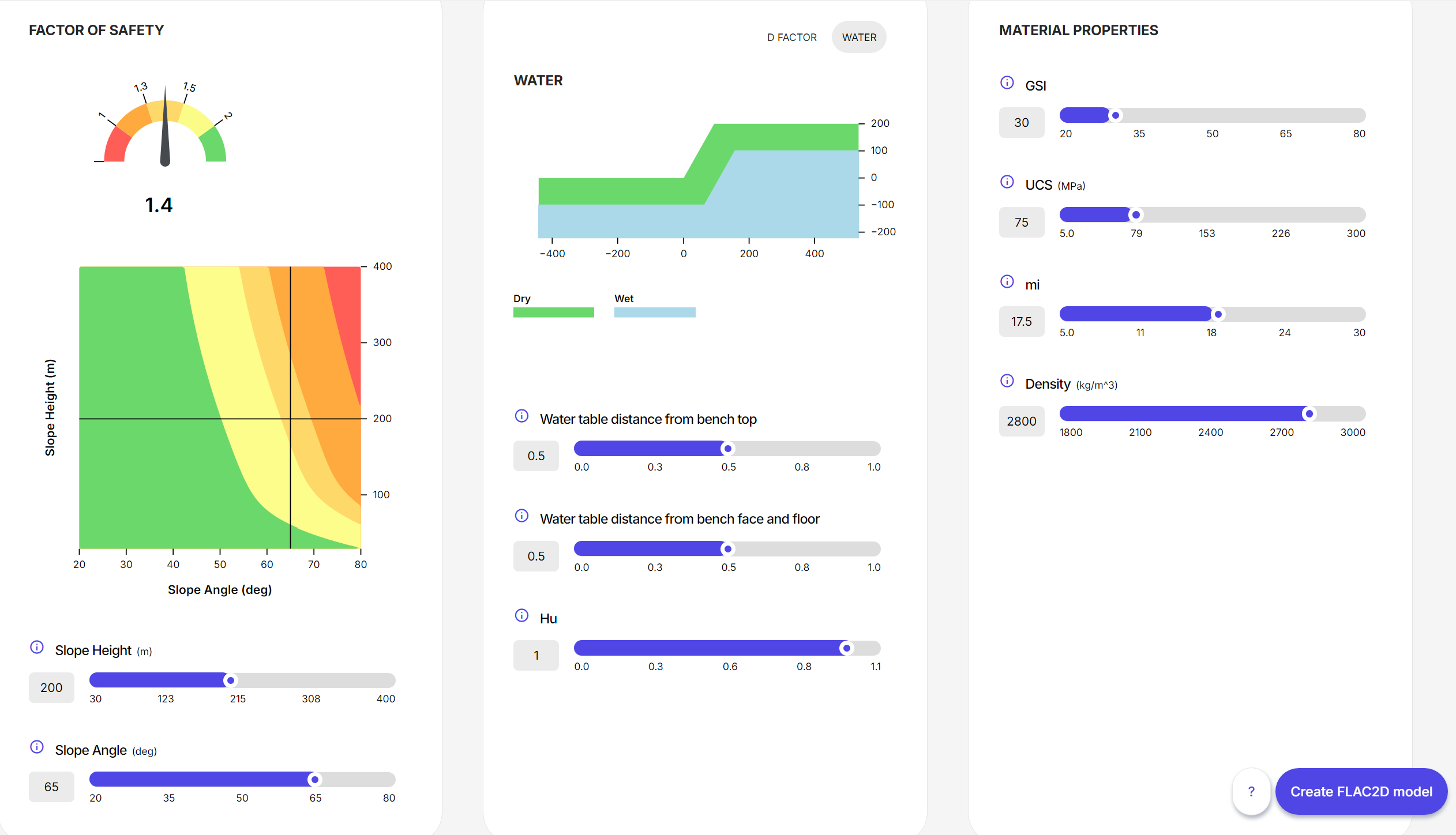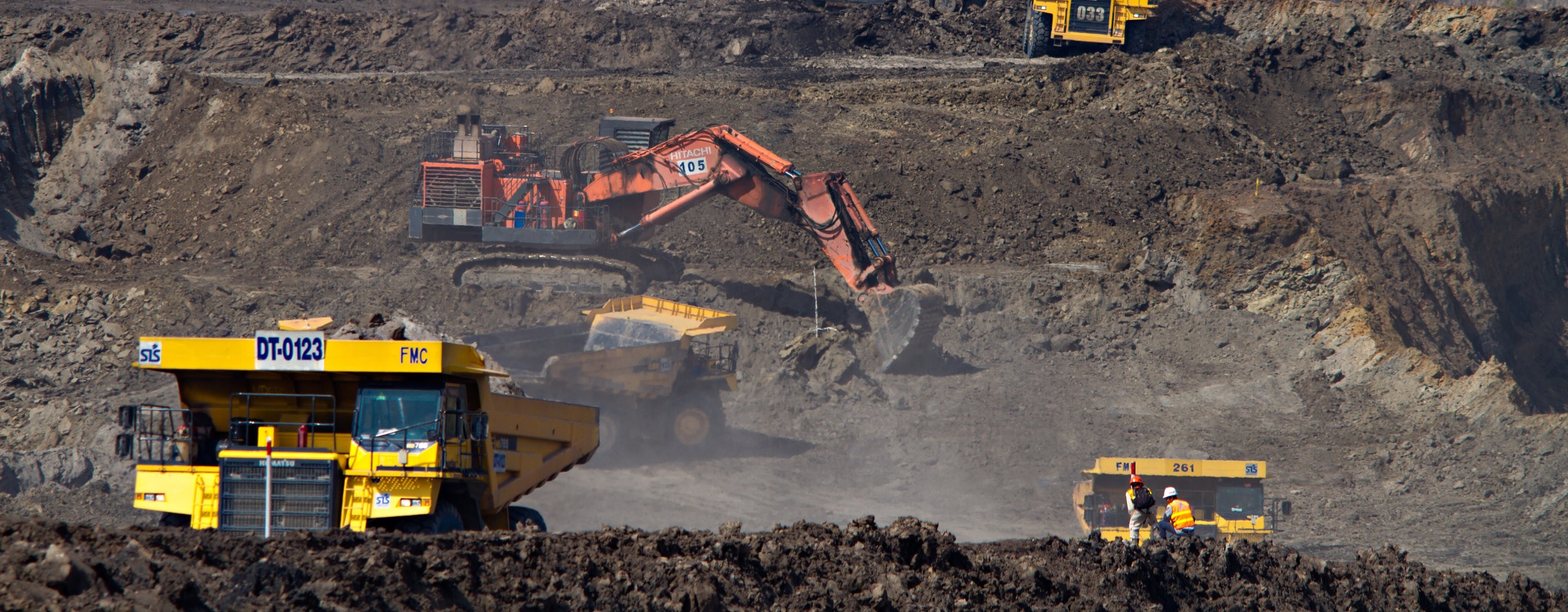The latest updates to ITASCA software products such as FLAC3D, FLAC2D, 3DEC, PFC, and MassFlow now include point releases (e.g., 9.1, 9.2) between major versions (e.g., 9.0, 10.0). These point releases bring significant benefits, especially for subscription license holders.
Subscription license holders enjoy seamless access to point releases at no additional cost. These point releases are packed with new features and capabilities developed in response to user feedback and industry advancements. By staying current with point releases, subscribers can leverage the latest tools and functionalities, enhancing their productivity, efficiency, and competitiveness.
Perpetual license holders also benefit from continuous support within their software version's support period. While they may not receive point releases, they still qualify for bug fix updates and minor improvements, maintaining stability and reliability in their software environment.
Cluster Computing
PARALLEL MODELING
The advent of ITASCA software web licenses made cloud computing possible, allowing many versions of a model to be run for parametric or sensitivity analyses. With v9.2, a new Cluster option allows FLAC3D subscription licenses to greatly speed up their numerical modeling solutions by launching multiple connected model instances in cluster computing environments.
The Cluster option in FLAC3D utilizes a leader-follower architecture. Each node in the cluster network runs a FLAC3D instance, and all the FLAC3D instances are connected through Message Passing Interface (MPI) for data communication and management. Typically, the Console version of FLAC3D is used to streamline cluster computing, but the GUI version of FLAC3D may also be used to view the local model partials on every node during cycling.
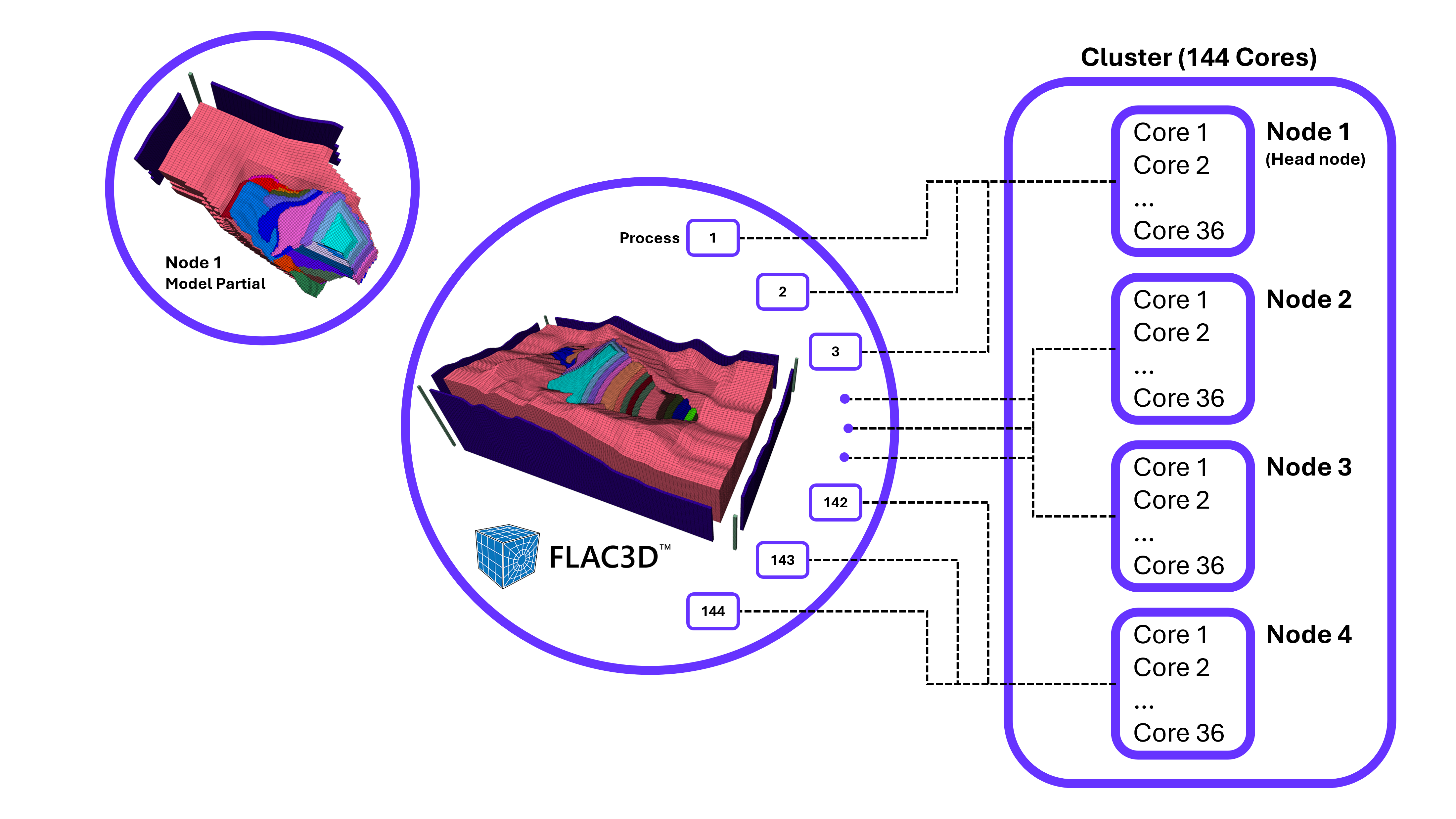
CURRENTLY SUPPORTED FLAC3D FEATURES
- Continuous mechanical analysis with both small and large strain configurations
- Discontinuous mechanical analysis with zone joints (small strain only)
- Excavations with apply relax conditions and backfilling
- Dynamic analysis, including Rayleigh/Maxwell damping settings and quiet/free-field boundary condition
- Fluid undrained pore pressure response
- General FISH callback functionalities
- All ITASCA built-in constitutive models
- Factor-of-safety analysis
- General FLAC3D functionalities: create/modify models, save/restore, pre-processing and post-processing (history, plot, etc.)
- Result determinism
THREE TIERS
The FLAC3D Cluster option has three available tiers to choose from:
- BASIC with up to 8 nodes
- ADVANCED with up to 16 nodes
- PROFESSIONAL with up to 32 nodes
SPEEDUP
For large models with millions of zones, a significant reduction in solution time can be achieved. The following chart demonstrates considerable scalability when solving a FLAC3D model with 8 million zones across multiple nodes using the Cluster option (performed on Amazon Web Services (AWS), node type m5a.4xlarge with 16 CPU Cores and 64 GB RAM per node).
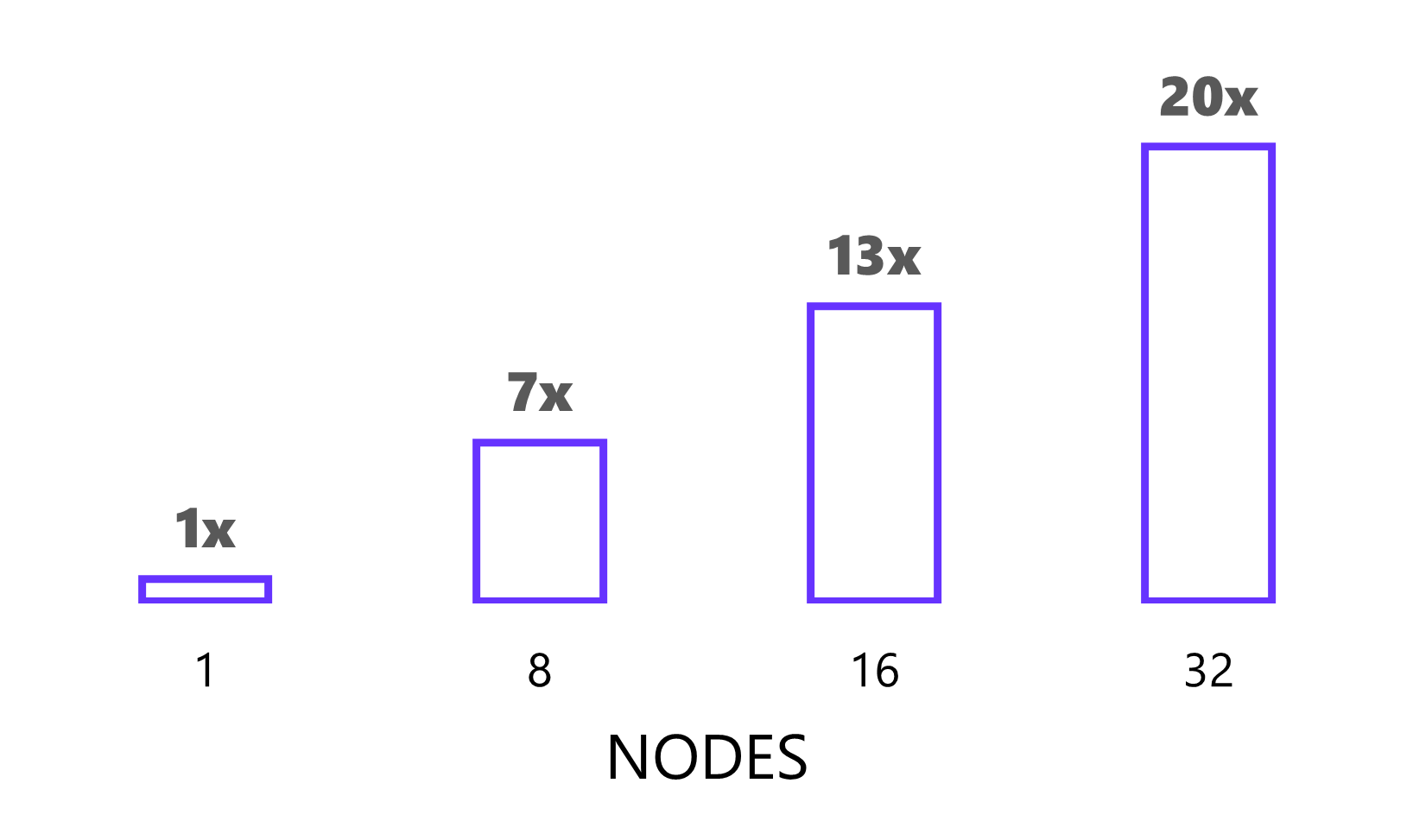
ACCURACY
The Cluster option in FLAC3D does not affect the results. FLAC3D generates results identical to normal runs with the same level of accuracy and determinism. The save files are also cross-compatible between FLAC3D on your computer and the Cluster option.
HOW DO I USE THE CLUSTER OPTION?
The Cluster option can be used with your organization's own local cluster computing system {add link to cluster computing FAQ}, using any cloud provider like Amazon Web Services (AWS), Microsoft Azure, or Google Cloud. Of course, not all organizations have such systems in house, and implementing a solution using a cloud provider can be daunting. For a straightforward, easy-to-use cloud-based solution, ITASCA works with Rescale to provide a pre-configured cluster computing environment that lets you select the number of nodes, hardware required, and apply your ITASCA software web license. Pricing is clearly shown and includes both Rescale's fees and hardware utilized. Rescale will automatically configure your cluster environment, install the latest ITASCA software version, and manage your model run(s). This approach also reduces capital costs since users do not need to invest money in purchasing many computers to perform these analyses.
LEARN MORE about using Rescale for cluster computing.
Performance
WORK FASTER with VERY LARGE MODELS
- For a 30 GB test model with 9.8 million zones:
- MODEL RESTORE is 3.1x faster
- MODEL NEW is 3.5x faster
- MODEL SAVE is 1.7x faster
Constitutive Models
CURVED MOHR-COULOMB MODEL
The traditional Mohr-Coulomb model assumes that a linear shear failure develops, which is just a simplification by linear extrapolation of the experimental data over a limited stress range. However, experimental data covering low stresses clearly show a curved failure envelope for a wide range of geomaterials from clay to rockfill. As such, this simplification could significantly overestimate safety factor, particularly for a shallow slip surface or near the excavated zones exhibiting low normal stress.
ITASCA has developed a new constitutive model called the Curved-Mohr-Coulomb model, which provides both efficiency and flexibility:
- Define the nonlinear (curved) failure envelope by a power law with only three parameters
- Or define the nonlinear failure envelope by inputting a piecewise curve with any pieces
- The curve can be in either shear stress versus normal stress space, or principal maximum stress versus principle minimum stress space
The failure laws based on linear or bilinear Mohr-Coulomb, Hoek-Brown, and Griffith models are special cases of this generalized model. The Curved Mohr-Coulomb constitutive model is available to use with the automatic factor of safety calculation.
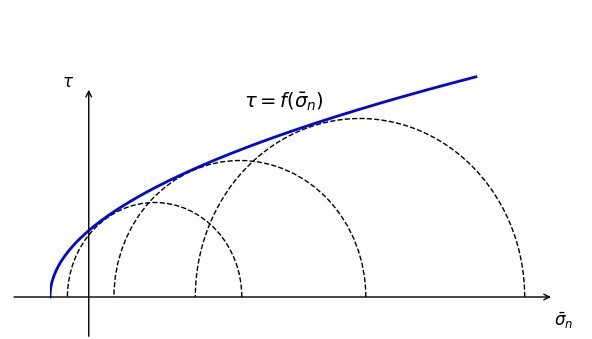
SYNTHETIC MICROSEISMICTY
- Calculate accumulated plastic strain tensor to extract synthetic seismic magnitudes and moment tensors
- Applicable for these constitutive models:
- Mohr-Coulomb,
- Hoek-Brown,
- IMASS (option),
- Ubiquitous-joint, and
- Softening/Hardening Ubiquitous-Joint (SUBI)
- Use
MODEL PLASTIC-STRAIN ON
Sketch Improvements
JOINT-SET WIZARD
- Use this dialog to easily generate and preview up to three joint-sets
- As in UDEC, specify joint-set orientation, spacing, gap, and trace length mean and standard deviation values
- Unlike UDEC, Sketch can mesh around joints floating in space
- Joint-Sets are automatically assigned to a group based on their name and to a special Joint-Set slot to easily identify these edges, separate them as joints, and assign properties
- Individual joints may also be specified manually using the Joint-Set slot
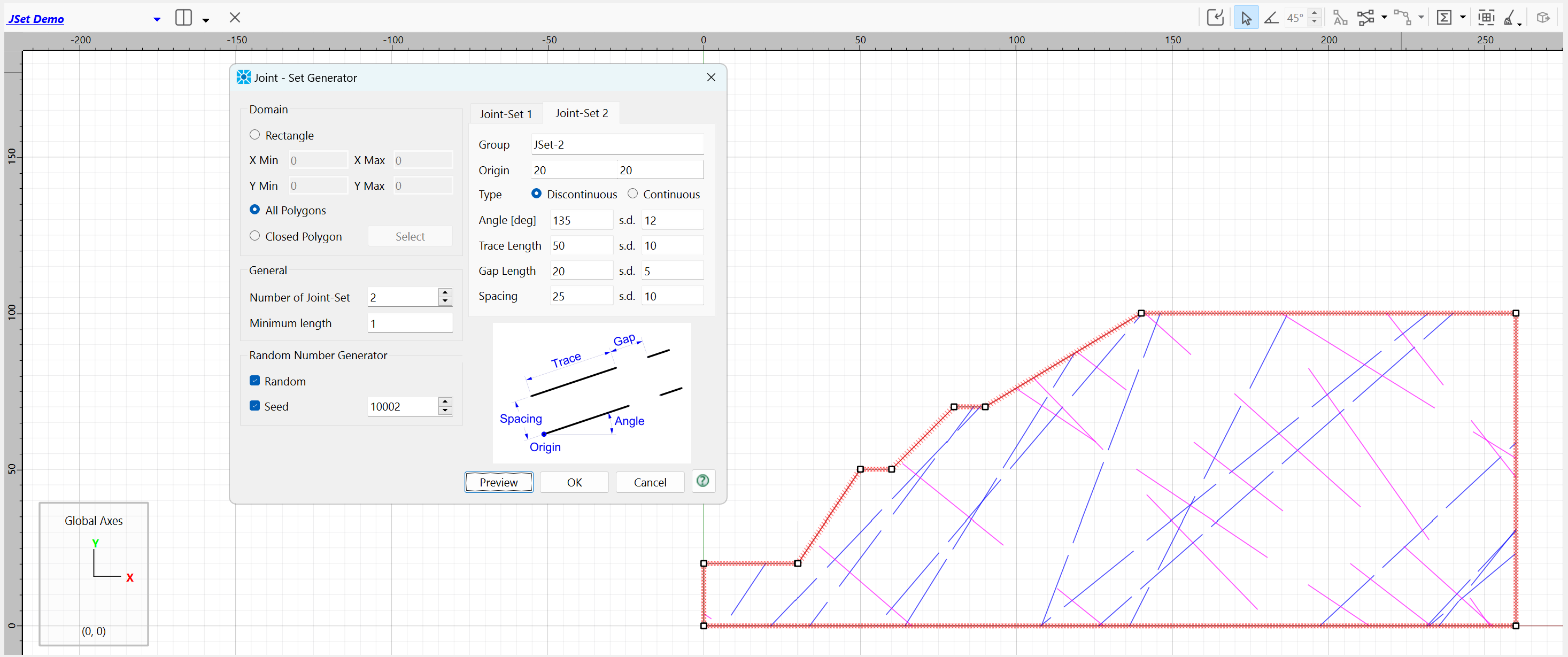
NEW TOOLS
- New logic to include open polygons and floating edges in unstructured meshing
- Automatically merge nearly coincident points to simplify imported DXFs
- Create and assign custom group slots
- Copy and paste objects to another position or Sketch set
Scripting
ZONE FIELD DATA
- Zone field data functions allow the user to make queries about the values of a model variable at arbitrary locations in space and can be used to contour data onto geometry (DXF, STL, etc.)
- Available for FISH, Zone Field Data are now accessible via Python
New Tools
LET GeoBOT HELP
- Ask GeoBOT, the ITASCA AI assistant, all your technical questions
- Trained on ITASCA's help documentation
- Answers questions in 95 languages
NEW UI CONTROL
- Right-click on the divider between windows in the workspace to switch, close, and flip windows
RAPID TOOLS
- Interactive tools powered by machine learning trained on ITASCA software surrogate models
- Includes a Hoek-Brown, rock slope model that instantaneously provides the factor of safety based on a number of adjustable inputs
- Use as a teaching tool to see the impact of different parameters and interactions
- Generate a data file of the source model for direct comparison, to modify it, or as a starting point for a related model
